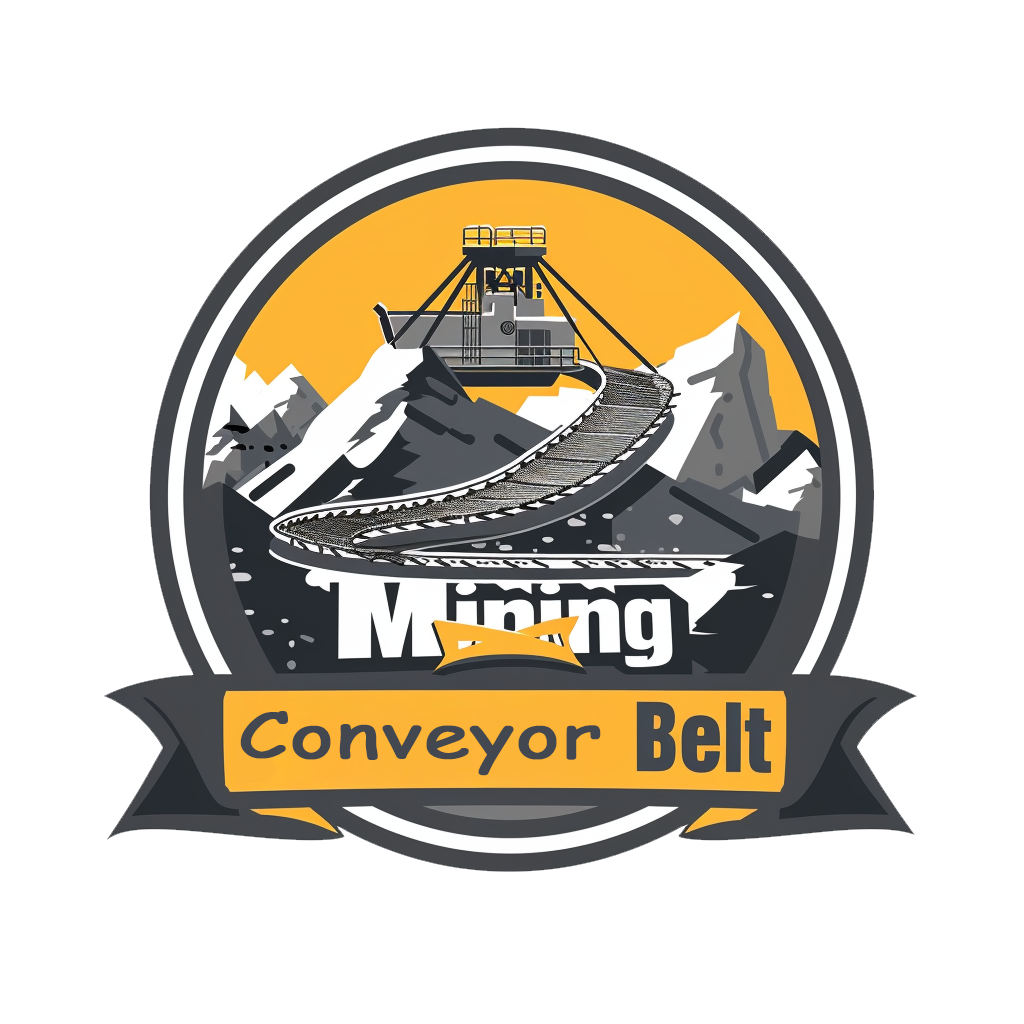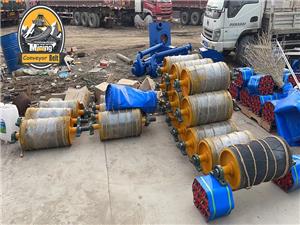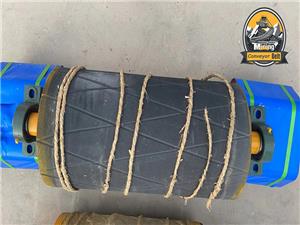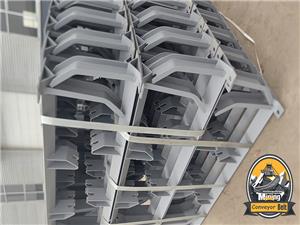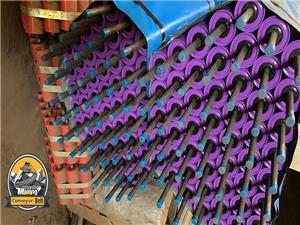Introduction to the nine common rubber conveyor belts. How many do you know?
1. Nylon conveyor belts are made of multiple layers of nylon canvas bonded together in a certain way, and covered with strong and elastic wear-resistant rubber on the top and bottom. They are used to transport small and medium-sized block/granular/powdered objects, and are suitable for high-speed, medium- and long-distance transportation with high impact resistance.
Varieties: According to the performance of the covering rubber, they can be divided into general-purpose type and wear-resistant/flame-retardant type. Nylon core conveyor belts have the characteristics of thin belt body, high strength, impact resistance, good performance, high interlayer bonding strength, excellent flexibility and long service life. They are suitable for conveying materials under medium- and long-distance, high-load and high-speed conditions.
Model: NN80, NN125, NN100, NN150, NN200, NN300, NN400; Ordinary type meets the standard: GB/T7984-2001; General flame retardant type meets the standard: GB/T10822-89 Specifications (1) Band width: 100mm-3000mm (2) Fabric layer: 2-8 layers (3) Covering rubber: Working surface: 1.5-8mm Non-working surface: 0mm-4.5mm
Compared with ordinary cotton core conveyor belts, nylon conveyor belts have the advantages of high strength, good elasticity, impact resistance, light weight, and good troughing properties. It can effectively reduce the transportation cost and achieve high-speed, large-span, and long-distance transportation.
2. Ordinary conveyor belt 1. This product is made of 100% cotton canvas (CC) or woven cotton impregnated canvas (VC) through calendering, molding, vulcanization and other processes.
2. This product is suitable for conveying non-corrosive, non-spiky, block, granular, powdered materials such as coal, coke, sand, cement and other bulk materials or finished items at room temperature.
3. This product can meet the requirements of different use conditions and can be made into different structures such as edge-wrapped, open-edge, middle ladder, and side ladder. Note: 1. Please write or come to negotiate in person for special specifications. 2. The thickness of the upper and lower covering layers can be selected according to the range in the table. 3. The width of the tape, the thickness of the covering layer and the deviation of the tape length shall be implemented in accordance with the requirements of the national standard GB/T4490-94.
4. The longitudinal full-thickness tensile strength specification series shall be implemented in accordance with GB/T7894-87.
Three acid-resistant and alkali-resistant conveyor belts are suitable for working environments in contact with acids and alkalis, such as phosphate fertilizer manufacturing, seawater salting, and the covering rubber is made of rubber and plastic blends and filled with inert materials with excellent acid and alkali resistance, which has better performance than chloroprene rubber acid and alkali resistant conveyor belts. The skeleton material is EP canvas, which is more acid-resistant and alkali-resistant than cotton canvas core belt. It is usually made into a ring.
Polyester (EP) conveyor belt Polyester conveyor belt is made of multiple layers of polyester (or polyester in the warp direction and polyester amine in the weft direction) canvas bonded together in a certain way, and the upper and lower covering rubbers are strong and elastic wear-resistant rubber.
It is used to convey small and medium-sized block/granular/powder materials. It is suitable for conveying materials under medium and long distances, high loads, and high-speed conditions.
Variety: According to the performance of the covering rubber, it can be divided into strong scratch type/strong wear type/general type/acid and alkali resistant type/flame-retardant type for general use. In addition to the many advantages of nylon conveyor belts, EP conveyor belts also have the unique advantages of small length and no reduction in wet strength. This is especially important for long-distance transportation and humid working conditions.
The strength specifications of EP canvas available for selection are: 100N/mm 125N/mm 150N/mm 200N/mm 250N/mm 300N/mm 400N/mm, etc.
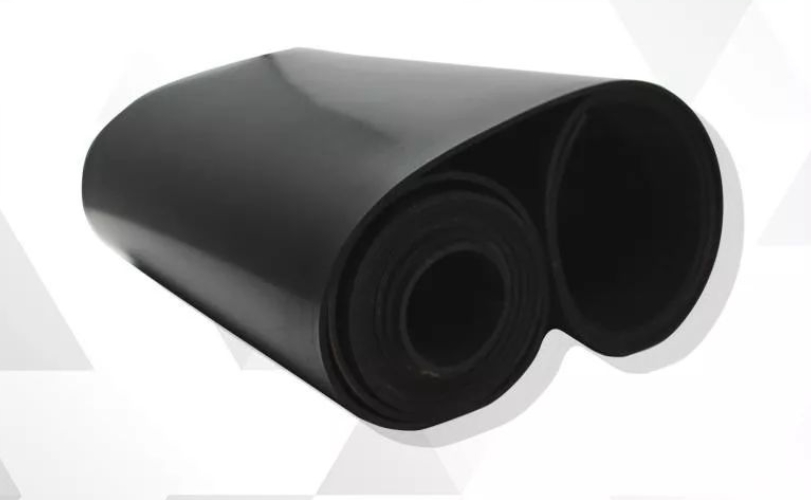
Fourth, heat-resistant conveyor belt
The heat-resistant conveyor belt is mainly used to transport high-temperature materials, such as sintered ore, hot coke, cement clinker, hot castings, etc. According to the main manifestations of damage to the heat-resistant belt and loss of conveying capacity and different heat resistance levels, EPDM or styrene-butadiene rubber is used as the covering rubber; high-strength and high-permeability polyester canvas or cotton canvas is used as the reinforcement layer. Heat-resistant glass cloth can be added between the covering rubber and the skeleton layer to increase the service life of the heat-resistant belt. According to user requirements, it can be made into an endless belt.
Five, oil-resistant conveyor belt
The covering rubber of the oil-resistant conveyor belt uses nitrile rubber with a high acrylonitrile content as the main material, and cotton canvas, nylon canvas or EP canvas is used as the reinforcement layer. Suitable for conveying oily materials and in environments where they come into contact with various working oils (except fuel or solvent oil). It has the advantages of low volume change rate, high strength retention rate, and wide range of use.
6. Polyester (EP) conveyor belt
Polyester conveyor belt is made of multiple layers of polyester (or polyester in the warp direction and polyester amine in the weft direction) canvas bonded together in a certain way, and the upper and lower covering rubbers are strong and elastic wear-resistant rubber. It is used to convey small and medium-sized block/granular/powder materials.
Suitable for conveying materials under medium and long distances, high loads, and high speed conditions. Varieties: According to the performance of the covering rubber, it can be divided into strong scratch type/strong wear type/general type/acid and alkali resistant type/flame retardant type for general use. In addition to the many advantages of nylon conveyor belts, EP conveyor belts also have the unique advantages of small length and no reduction in wet strength. This is especially important for long-distance transportation and humid working conditions.
The strength specifications of EP canvas available for selection are: 100N/mm 125N/mm 150N/mm 200N/mm 250N/mm 300N/mm 400N/mm, etc.
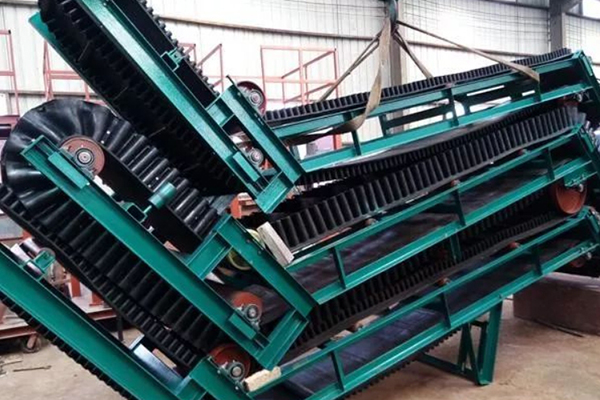
VII. Whole core flame retardant conveyor belt
The whole core flame retardant conveyor belt is made of an integral belt core after being impregnated with polyvinyl chloride paste for plasticization or vulcanization. It has the characteristics of high strength, large transport capacity, and balanced transport. At the same time, the product has good flame retardant, anti-static, impact resistance, wear resistance, and corrosion resistance. This product is mainly suitable for underground transportation in coal mines, and can also be used for material transportation in the metallurgical and chemical industries.
The whole core flame retardant conveyor belt can be divided into PVC type and PVG type. The upper and lower covering layers of the PVC type are both PVC cover rubber, and the single-sided rubber is ≥0.8mm. The upper and lower covering layers of the PVG type are both nitrile rubber and PVC, and the single-sided thickness is 1.5mm-4.5mm. The transport inclination angle of PVC conveyor belt is <16o, and the transport inclination angle of PVG conveyor belt is <20o. Both can be used for transportation above and below the coal mine. The whole core flame retardant conveyor belt is mainly used in coal mines.
The belt features: the belt body does not delaminate, has small elongation, is impact-resistant and tear-resistant. According to the different knots, it can be divided into PVC type (plastic surface), PVG type (rubber surface attached to PVC) whole core flame retardant belt, and implements MT/914-2002 standard. ○PVC type is suitable for material transportation under dry conditions with an inclination angle of less than 16 degrees. ○PVG type is suitable for conveying wet materials with an inclination angle of less than 20 degrees·1. Model N/mm (tensile strength): Level 4 Level 5 Level 6 Level 7 Level 8 Level 9 Level 10 Model 680s 800s 1000s 1250s 1400s 1600s 1800s·
2. Flame retardant performance: (1) Drum grinding number: The drum surface temperature is not more than 325℃. (2) Blowtorch burning: The average flame-free time of the full-thickness test piece without the blowtorch is not more than 3.0S, and the average time without the covering layer is not more than 5.0S (3) Propane combustion: The lossless length is greater than 250mm·
3. Surface resistance value: The average value of the upper and lower surfaces is not more than 3.0×108Ω
VIII. Patterned conveyor belt
The patterned conveyor belt consists of two parts: the base belt and the pattern. Due to different transported materials and different conveying inclination angles, the required pattern shape and height are also different. Commonly used patterned conveyor belts include: herringbone patterned conveyor belts, figure eight patterned conveyor belts, fishbone patterned conveyor belts, U-shaped patterned conveyor belts, cylindrical patterned conveyor belts, pitted patterned conveyor belts, etc. Or designed according to user requirements, suitable for conveying powdered, granular, and block materials with an inclination angle of less than 30 degrees.
Commonly used patterned conveyor belts are as follows:
1. Herringbone pattern Features: There is a "herringbone" pattern on the belt surface that is higher than the belt body. The pattern can be open or closed, and each pattern can be divided into three types: high, medium, and low. Use: Suitable for conveying powdered, granular, and small block materials with an inclination angle of ≤40 degrees, and can also convey bagged materials.
2. Stripe pattern Features: There are stripe patterns on the belt surface that are higher than the belt body. The patterns are divided into three types: high, medium, and low. Each pattern can be divided into sparse and dense forms according to the arrangement spacing. Use: Suitable for horizontal conveying of packaging materials with an inclination angle of ≤30 degrees. If it is in the grooved state, it can be replaced by a three-way herringbone pattern.
3. Granular pattern Features: There are granular patterns on the belt surface that are higher than the belt body or recessed into the belt body. The pits can also be made into square holes, prisms and cloth patterns. Uses: The convex granular pattern is suitable for conveying soft packaging or materials that require grip (such as cardboard boxes) or non-slip conveying. The pit-shaped granular pattern is suitable for conveying granular materials with an inclination angle of ≤45 degrees.
4. Fan-shaped pattern Features: There are semi-fan-shaped (or 1/4 circular) patterns on the belt surface. When the tape is grooved, the pattern is combined into a fan-shaped (or semi-circular) shape, which belongs to the high pattern category. Uses: It is suitable for conveying powder, granules and block materials at a large inclination angle of ≤60 degrees. The width of the pattern conveyor belt that our company can supply is ≤2400mm.
Scope of application and characteristics: This product is widely used in ports, mines, electricity, coal, building materials, concrete and grain departments to lift various materials. It is a new type of efficient and ideal conveying equipment.
●Application: Suitable for bulk and packaged material transportation with an inclination angle below 30 degrees.
●Features: Prevent materials from sliding down and improve the transportation capacity.
